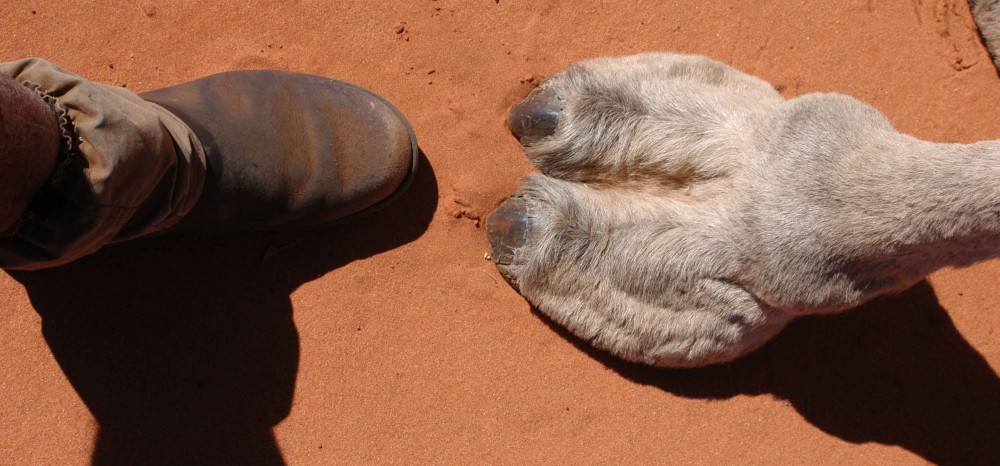The satellite data system has been having a few hiccups, but I now seem to have sorted things out.
In my last blog I mentioned that the budgie population in the desert was thriving. But what I saw last Friday was quite astonishing. All during the morning I was watching huge flocks of birds fly south-east which meant that the recently burnt country would probably continue, as the they were feeding on the seeds of the new grasses. I made camp at about 3.30 and from about 5pm till sunset, the flocks came back, returning to the west and (presumably) the Coolabahs of the Hale River to roost.
It was an incredible sight as wave after wave flew right over camp, about 2 – 5 metres above ground.
Each flock would have had 2000 to 3000 birds, and I counted 23 ‘waves’. I sat on the dune with my cup of tea and filmed, photographed and watched this great spectacle, thinking that it couldn’t get any better. But on the horizon was an ink blot of molten feathers swirling and diving along the dune. This was THE swarm. I would say over ten thousand birds. I have never seen anything like this before in the Simpson or anywhere for that matter. During the boom wet years of 2009 to 2011 I witnessed the desert thrive with thousands of birds migrating and breeding on the replenished wetlands, countless thousands of native black rats in plague proportions, and I realize now that after the massive fires of last summer, the next boom cycle has arrived.
The camels were feeding in the dune corridor and they all stopped and looked at this magnificent display. It sounded like a motor car roaring along a road a few kilometres away, and you could often hear the flocks before you saw them.
By Sunday, I counted 4 lone budgies all day. I had now walked past their feeding grounds. I saw a few flocks today, about 50 strong, all heading north.
Since leaving the road, all of the country I have walked through has been burnt. The king plant species, of the Simpson, Spinifex, curse of many desert trekkers and explorers, is nowhere to be seen. This makes walking extremely easy, and the recent rains (May) have provided a layer of colour. The predominant plants are now wild parsnip, poached egg daisy and cattle bush, all of which the camels eat.
I have never had such easy walking conditions. The potential problem with this however, is that if I strike burnt country that hasn’t received rain, then there will be no feed for the camels.
The other downside, is that there is little good solid firewood. Enough to boil a billy and cook a meal, but nothing that provides any heat. Night temps are down to -3, whilst daytime up to the mid/high 20’s.
Tuesday 14th
As we were loading this morning, a small group of camels came to watch. One young bull, 5 cows and two very small calves. A family group like this poses no threat to my camels, and they all stood there and watched us for 30mins, before deciding that there was nothing further to be gained from the experience, and moved off.
Wednesday 15th
I expect to arrive at Geosurvey Hill late morning tomorrow. I will explore the surrounding claypans and probably camp on one, rather than take the camels to GH itself. Today was the warmest so far, and the fact that it was also the first day with no wind produced a very warm afternoon – 30 degrees in mid afternoon. There was the faintest hint of a reluctant breeze every time we crossed a dune, but otherwise the day was still and quiet. It was also our biggest walking day – just over 16kms from last camp. We had to walk over 20kms in a wobbly line though, to get the 16. Average dune height is 9 to 10 metres which the team is negotiating without difficulty.
Saw a couple of flocks of budgies, a bearded dragon, two quail and heard a dingo howling this morning as we left camp.
Thursday 16th
Geosurvey Hill
We approached the set of three claypans from the northwest and saw the first evidence of occupation – a chipping of white stone – on the third dune to the west. I also noted the first ‘rat highways’ that I have seen since Andado Station. These are the well used pads of the native black rat and are unmistakable. There were only a couple, but it indicates that the population may be contracting back to these claypans. There was also evidence of rabbits.
We are camped on the claypan nearest the hill. The feed is ok and the camels have the afternoon off to wander on the dune and eat.
I note that Dr Reg Sprigg camped near here in 1964 on the first solo south-north vehicle crossing of the Simpson.

Great description, thanks, Andrew. Interesting there’s no spinifex. Any pics possible, e.g. of ‘rat highways’.
Pics coming soon John, but have to be careful with data usage.